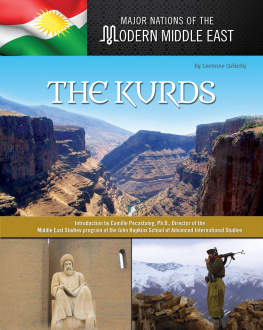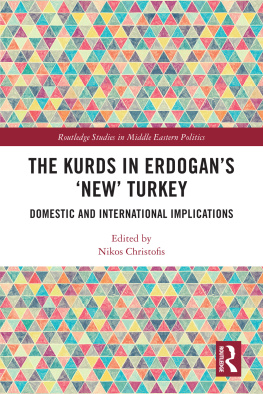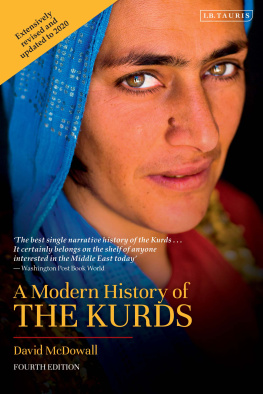First published in 1993 by
Kegan Paul International
This edition first published in 2010 by
Routledge
2 Park Square, Milton Park, Abingdon, Oxon, OX14 4RN
Simultaneously published in the USA and Canada
by Routledge
711 Third Avenue, New York, NY 10017
Routledge is an imprint of the Taylor & Francis Group, an informa business
John S. Guest 1987, 1993
All rights reserved. No part of this book may be reprinted or reproduced or utilised in any form or by any electronic, mechanical, or other means, now known or hereafter invented, including photocopying and recording, or in any information storage or retrieval system, without permission in writing from the publishers.
British Library Cataloguing in Publication Data
A catalogue record for this book is available from the British Library
ISBN 10: 0-7103-0456-0 (hbk)
ISBN 13: 978-0-7103-0456-8 (hbk)
Publishers Note
The publisher has gone to great lengths to ensure the quality of this reprint but points out that some imperfections in the original copies may be apparent. The publisher has made every effort to contact original copyright holders and would welcome correspondence from those they have been unable to trace.
Preface to the Revised Edition
A few years ago my family and I visited a village in Turkey inhabited by Yezidis. The Yezidis are a community of around 200,000 Kurds who possess their own religion, quite distinct from Islam, which most other Kurds profess, and from the Christian and Jewish faiths. The Yezidis live in the northern parts of Iraq and Syria, in eastern Turkey, in Germany and in the ex-Soviet republics of Armenia and Georgia. (In Armenia the Yezidis, long classified as Kurds, are now recognized as a separate minority group and the term Kurd is applied only to Moslem Kurds.)
About half of the Yezidis live in northern Iraq, where the principal shrine of their religion is located. Two brief trips in 1991 and 1992 enabled me to visit the shrine and several Yezidi villages in the United Nations Security Zone and to meet religious leaders and members of the princely family. I was not able to go to the Yezidi villages in the Sheikhan plain north of Mosul or in the Sinjar mountains to the west. My main contacts have been with villagers in eastern Turkey, many of whom now live and work in Germany, and more recently with the Yezidis in Armenia, where they have been officially recognized as a national minority group.
This book stems from a conversation with the Yezidi priest of the village where I stayed on my second visit to eastern Turkey. At that time the Kurds were regarded as mountain Turks who had forgotten their original tongue and the use of the Kurdish language in public was forbidden. Pointing to the newly constructed schoolhouse, he remarked that now the children were learning to read and write they were asking him questions about the Yezidi scriptures and the history of the community. Lacking any written material, he could only repeat to them the oral traditions he had himself learned as a child.
(Coincidentally, a similar problem arose in Armenia during the last years of the Soviet regime. The younger generation of Yezidis was quite literate in Kurdish, Armenian and in some cases in Russian, but had been denied access to written material about their religion. In 1989 the Armenian Academy of Sciences published an article, later reproduced in booklet form, describing the Yezidi religion and printing the texts of their sacred books in Armenian.)
The Yezidi religion has been studied in depth by Christian and Moslem scholars over the past two centuries. The third chapter of this book gives an outline of the religion; appendices at the end of the book provide English translations of the Yezidis two sacred books and of a remarkable discussion of the religion recently released by the principal religious authorities in videotape form.
The history of the Yezidi community and their place in the history of the Kurdish people goes back 900 years even longer if one traces their antecedents back through antiquity. This narrative, pieced together from the testimony of those who knew or dealt with them from their earliest days through 1957, is designed to fill a niche in Near Eastern history. As with the first edition of this book, I have chosen not to carry forward the basic narrative beyond 1957 because many of the events that have occurred since that date involve persons still alive today. However, the illustrations to this new edition show the tomb of Sheikh Adi, the Yezidi prophet, in its new setting, as well as two of the brass peacocks (sanjaks) used in the collection of alms. I have also brought up to date the history of the Yezidis in Transcaucasia.
My friend the priest in Kurukavak is no longer alive, but I hope that his fellow-villagers and the entire Yezidi community will find in this book a tribute to their extraordinary record of survival in a harsh environment.
The composition of this book has been eased and enriched by the help and advice I have received from many quarters.
First of all, I must thank my many Yezidi friends in Iraq, Turkey, Germany, Armenia and elsewhere through whom I have learned to understand how their pride in their inherited traditions has enabled them to endure centuries of discrimination and persecution.
I am most grateful for the access to official documents granted by the Public Record Office and the India Office Library and Records. Transcripts/translations of Crown-copyright records in the Public Record Office and unpublished Crown-copyright material in the India Office Records reproduced in this book appear by permission of the Controller of Her Majestys Stationery Office. I am also grateful for similar permission from the French Ministre des Affaires trangres, Division des Archives et de la Documentation, and the Sacra Congregazione per lEvangelizzazione dei Popoli o De Propaganda Fide. In addition, Dr Erturul Zeki kte obtained for me copies of a number of relevant documents from the Ottoman archives in Istanbul.
Dr Abd el-Salam el-Awadly, General Inspector of Antiquities, and Dr Henri A. Awad kindly accompanied me on my visit to the mausoleum of Sheikh Zein ed-Din Yusuf in Cairo at a time when it was not generally open to the public and enabled me to photograph the inscriptions.
I should also thank the following institutions for their kind permission to consult and, in the case of certain extracts, quote from documents in their archives: Church Missionary Society and the University of Birmingham Library, where the CMS archives are located; Presbyterian Historical Society, Philadelphia; Royal Geographical Society; The Society for Promoting Christian Knowledge (through the kind offices of the late Miss Teresa Child); United Church Board for World Ministries (successor to the American Board of Commissioners for Foreign Missions) and the Houghton Library, Harvard University, where the ABCFM archives are housed; and the United Society for the Propagation of the Gospel. I am also obliged to the British Library, Department of Manuscripts, for permission to consult the Layard papers; to St. Antonys College, Middle East Centre, for permission to consult the C. J. Edmonds papers in their possession; to the University of Newcastle upon Tyne, Department of Archaeology, for providing me with material from the Gertrude Bell Collection; and, through the kind offices of Ms Alexandra Garcia-Mata, to the Institute of Current World Affairs, Hanover, New Hampshire, for permission to read the letters from Thomas C. Goltz, a fellow of the Institute. I regret that time constraints made it impossible for me to examine the rich lode of material at the Armenian Academy of Sciences in Yerevan or the increasing flow of books and articles on the Yezidis produced by Iraqi scholars in recent years.











